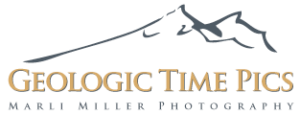Search for any geological feature below
–then click on the image to see a larger version in its correct format, a more detailed caption, and an ID number.

and please, drop me a line if you find this site useful!
*****
SOME POINTERS:
Photos typically include their locations, so you can use locations as keywords too. You get more hits with shorter words, and fewer hits as you become increasingly specific with increasing numbers of keywords. It’s best to use singular rather than plural (eg “volcano” instead of “volcanoes”).
As some words are included in others (“salt” within “basalt,” for example) you might want to be more specific to avoid getting a bunch of irrelevant photos.
Or you can just scroll down and see the most recently added photos… Enjoy!
Debris flow fan, N Montana.

Debris flow fan, northern Montana. Note the individual debris flow lobes as well as the channel. (O90908-18)
Download ImageGlacier, Yoho NP, Canada.

Glacier and headwall, Yoho National Park, British Columbia, Canada. Note the moraine in front of the present terminus. (090910-31)
Download ImageProterozoic stromatolites, Montana

Stromatolites in Helena Formation of Proterozoic Belt Supergroup, Glacier National park, Montana (090718-97)
Download ImageWaterfall and Hanging Valley, British Columbia

Takakkaw Falls, In Yoho National Park, British Columbia, Canada, falls over more than 1200 feet of sedimentary rock. Above it is a hanging valley, stranded above the main valley from glacial erosion during the Pleistocene. (090910-103)
Download ImageProterozoic Belt Supergroup, Montana (vertical)

Brown, Green, white, and red sedimentary strata, indicating different levels of oxidation of disseminated iron in the rock. Proterozoic Spokane Formation, Glacier National Park, Montana. (090718-41)
Download Imagepothole along river, Montana.

Pothole, formed by river erosion. Macdonald Creek, Glacier National Park, Montana. (090719-44)
Download ImageProterozoic stromatolites, Montana

Stromatolites in Proterozoic Helena Formation of the Belt Supergroup. Stromatalites are fossilized algal mats. (090718-114)
Download ImageSmall detached fold in sandstone and shale.

Small detached fold in sandstone and shale. Proterozoic Grinnell Formation, Glacier National Park, Montana. (090718-11)
Download ImageLewis thrust fault, Montana

The Lewis thrust fault, which places rock over the Proterozoic Belt Supergroup over Cretaceous rock, lies at the base of the cliffs, just below the tan rock unit. (090711-57)
Download ImageRepetition of strata on thrust, Montana.

Both ridge-forming rock units are Missiissippian-age limestone that has been repeated along a thrust fault. Sun River Canyon, Montana. (090716-43)
Download ImageTree roots and boulders.

Falling trees aid the downslope movement of bedrock in forested areas by pulling boulders up from beneath the land surface. (090710-54)
Download ImageHydrophytic plants in lake, southern Alberta.

Hydrophytic plants and reflection in lake, southern Alberta. (090710-13)
Download ImageLewis Thrust fault zone, Montana (Pan)

Normal faults extend the upper plate of Proterozoic rock of the Lewis Thrust, Glacier National Park, Montana. (090711-49)
Download ImageAncient mudcracks in rock.

Proterozoic mudcracks filled with sand in mudstone of the Proterozoic Belt Supergroup, southern Alberta, Canada. Photos is about 15 cm across. (090710-60).
Download ImageOverturned folds, Alberta.

Overturned syncline (above) and anticline (below) on mountainside, Waterton Lakes National Park, Alberta, Canada. (090710-8)
Download ImageU-shaped glacial valley and paternoster lakes

Carthew Lakes form a series of paternoster lakes in the upper reaches of a glacial valley in Waterton Lakes National Park, Alberta, Canada. (090710-25)
Download ImageLimestone cliffs, southern Alberta.

Paleozoic LImestone cliffs, southern Alberta, Canada. (090709-24)
Download ImageTalus Cones (vertical)

Talus cones, built through the accumulation of rock debris, fallen from the cliffs above. Banff National Park, Canada. (ID: 090707-14)
Download ImageBraided River and Canadian Rockies

The Kicking Horse River forms a braided river pattern as it flows through the Canadian Rockies in Yoho National Park, Canada. (090707-2)
Download ImageDrumlin, southern Alberta (Pan).

Drumlin, a depositional feature of continental ice sheets, southern Alberta, Canada. Ice flowed from left to right. (090709-19pan)
Download ImageDrumlin, southern Alberta.

Drumlin, a depositional feature of continental ice sheets, southern Alberta, Canada. Ice flowed from left to right. (090709-13)
Download Image
You must be logged in to post a comment.